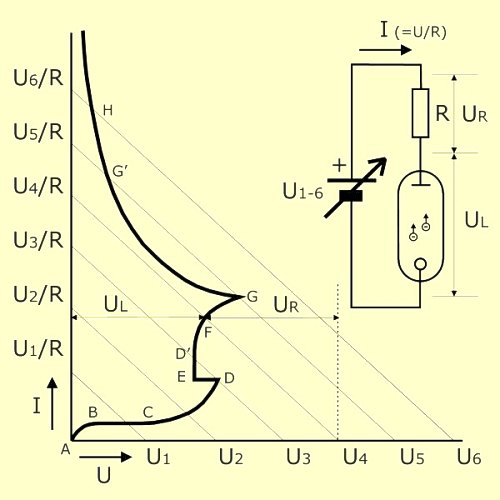FROM-GLOW-TO-ARC-DISCHARGE
Increasing the supply voltage
once a glow discharge has
been established, further
intensifies the electric field.
This causes the collisions of
electrons with gas atoms or
with the anode and collisions
between gas ions and the
cathode to become more and
more violent. This in turn
increases the temperature of
the gas and the electrodes and
finally, under the lasting
bombardment of gas ions,
isolated hot-spots will develop
on the cathode. This is around
point G of the voltage-current
characteristic. In a process
similar to what happens in the
glowing filament of an
incandescent lamp, the hot
spots at the cathode will start to emit electrons by thermal emission. In an
incandescent lamp this thermal emission is not desired and will be prevented as much
as possible. In a gas discharge tube however, the existence of some local glowing of
the cathode is a crucial condition to start an arc discharge. Around a glowing hot
spot, a cloud of negatively charged electrons will emerge. This cloud of electrons will
attract positively charged ions that result from the glow discharge. A part of these
ions will recombine with the electrons around the cathode but most of them will collide
upon the cathode and hence increase the intensity of the hot spot even further.
Again a chain reaction will develop and in a fraction of a second the whole cathode
will start glowing. From point G of the characteristic on, the relatively calm glow
discharge transforms into a much more violent arc discharge.


